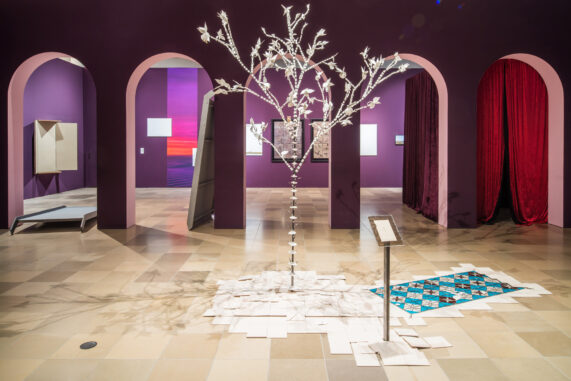
About the Exhibition
Once again, the Städel Museum presented the graduates’ exhibition of the Hochschule für Bildende Künste—Städelschule. Entitled “Air Conditioned”, the show featured artworks in various mediums and disciplines—among them painting, sculpture, installation and video—by altogether twenty graduates.
Air conditioning in the museum is omnipresent—invisible, neutral in taste and well-tempered, a formal and essential characteristic of a venue for the exhibition of objects. It regulates the temperature and humidity to extend the artworks’ longevity. The interiors seem to elude the changes brought about by the weather, even the course of time itself. The graduates’ exhibition “Air Conditioned” was bound to these common climatic conditions and thus called attention to the underlying structures: just as an institution controls its rooms climatically, it also controlled the subjects that moved within those rooms.
In 1966–67, the artists’ group Art & Language staged the important exhibition “The Air-Conditioning Show”, in which empty gallery walls and an air-conditioning unit exposed the internal mechanisms of an institution. With a full awareness of that show, the Städel graduates presented works that take a stance on the mechanisms of art production. Within the context of the all-pervasive late capitalism, however, they cannot escape the institutional conditions or the silent impacts of the status quo. On the contrary, their works—like the air itself—are a composition of all those elements.
The participating artists were Immanuel Birkert, Xenia Bond, Jakob Brugge, Harry Chapman, Olivia Coran, Edi Danartono, Onur Gökmen, Siri Hagberg, Stian Hansen, Helena Hasson, K-K, Valentina Knežević, Niwat Manatpiyalert, José Montealegre, Ivan Murzin, Max Negrelli, François Pisapia, Sóley Ragnarsdóttir, Kristin Reiman and Julian Tromp.
The graduates studied in the classes of Monika Baer, Gerard Byrne, Peter Fischli, Nikolas Gambaroff, Douglas Gordon, Judith Hopf, Hassan Khan, Laure Prouvost, Tobias Rehberger, Willem de Rooij, Amy Sillman, Wu Tsang and Haegue Yang.